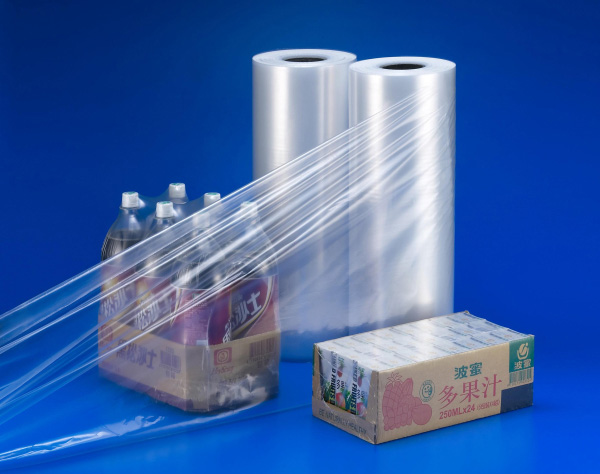Cast stretch film is a common plastic film production process. The following is the usual manufacturing process:
1. Raw material preparation:
Polyethylene (PE) is usually used as raw material, which can be divided into low density polyethylene (LDPE), linear low density polyethylene (LLDPE) or high density polyethylene (HDPE). These feedstocks are usually supplied in granular or pellet form.
2. Melt extrusion:
Feed the raw material particles into the extruder, melt the raw materials through heating and extrusion, and extrude them through the extrusion head to form a preliminary film.
3. Casting and molding:
The initial film is cooled through a cooling roller or a cooling water tank, so that it is quickly cooled and solidified, and then pulled to the appropriate size and thickness by a traction roller.
4. Stretching:
The cast film is fed into a stretching machine and stretched through a series of rollers or clamps to improve the strength and transparency of the film.
5. Winding:
The stretched film is rolled up through a roller or winder to form a roll-shaped finished film roll, which is convenient for storage and transportation.
Blown stretch film is a common plastic film production process. The following is the usual manufacturing process:
1. Raw material preparation:
Polyethylene (PE) and other plastic particles are also used as raw materials.
2. Blow molding extrusion:
The plastic particles are fed into the screw barrel of the blow molding machine, melted by heating and extrusion, and then the melted plastic is extruded into a hollow tube.
3. Blown film molding:
Air is blown into the inside of the tube through the die, causing it to expand and extend into a wide film shape. At the same time, the film is rapidly cooled and solidified through rollers or coolers.
4. Stretching:
The cooled and solidified film is stretched twice through a stretching machine to improve the strength and tensile properties of the film.
5. Winding:
After finishing, the final film is rolled into a roll by a winding machine to form a finished film roll.
The manufacturing process of blown stretch film is relatively simple and efficient, and it is widely used in food packaging, agricultural covering films, industrial purposes and other fields. Film products with different properties and specifications can be produced by adjusting different raw material formulas and process parameters.

Blow molded stretch film and cast stretch film each have their own advantages and applicable scenarios. You need to choose the appropriate product according to specific needs:
Advantages: high production efficiency, relatively low production cost, good film uniformity, and high dimensional stability.
Applicable scenarios: Suitable for general cargo packaging, pallet packaging, logistics and transportation, etc.
Advantages: better tensile properties, strong impact resistance, high transparency, smooth surface.
Applicable scenarios: Suitable for items with higher packaging requirements and better protection properties, such as high-value fragile goods, food, etc.
Taken together, if the product has higher requirements for appearance quality and better protective performance, cast stretch film may be more suitable; and if more attention is paid to production efficiency and cost control, and the general performance requirements of the product are higher, Blown stretch film is a good choice. The final choice should be comprehensively considered based on specific usage scenarios and needs.
|
|
Cast Stretch Film |
Blown Stretch Film |
|
Load Retention |
Stretches easily, which can cause shifting |
More holding power, won't re-stretch once applied |
|
Film Memory |
Minimal shrinking back to the original state after stretching |
Higher shrinking back to original size after stretching |
|
Film Yield |
More stretch to wrap more pallets with less film |
Less stretch requires more film to wrap pallets |
|
Puncture Resistance |
Standard tearing can occur with high-stress |
Greater resistance to breaking |
|
Cling of the Film |
2-sided cling allows pallets to stick together |
1-sided cling for higher load retention |
|
Visual Clarity |
Perfectly clear, easy to scan and read, higher gloss creates reflections |
Not crystal clear, difficult to scan and read, low gloss reduces reflections |




